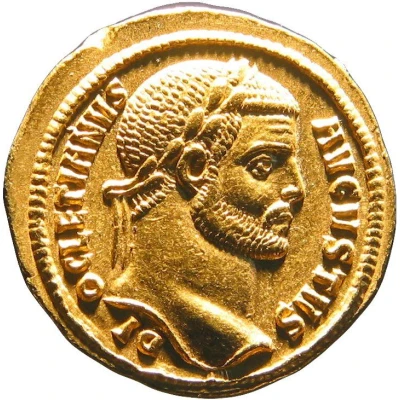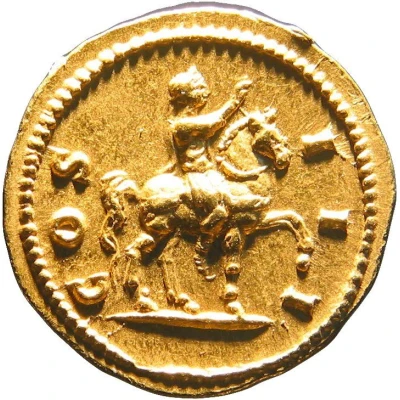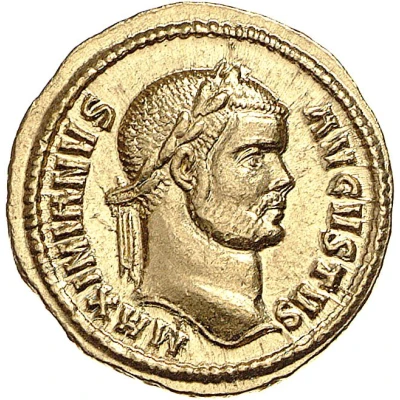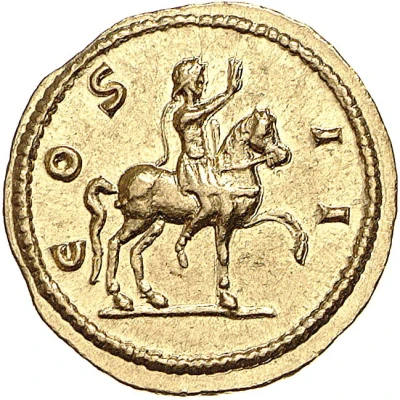Aureus - Diocletianus COS III
| Gold | - | - |
| Issuer | Rome › Roman Empire (27 BC - 395 AD) |
|---|---|
| Emperor | Diocletian (Gaius Aurelius Valerius Diocletianus) (284-305) Maximian Herculius (Marcus Aurelius Valerius Maximianus) (286-305) |
| Type | Standard circulation coin |
| Years | 287-290 |
| Value | Aureus (25⁄2) |
| Currency | Antoninianus, Reform of Caracalla (AD 215 – 301) |
| Composition | Gold |
| Shape | Round (irregular) |
| Technique | Hammered |
| Demonetized | Yes |
| Updated | 2024-10-05 |
| Numista | N#306155 |
|---|---|
| Rarity index | 100% |
Reverse
Diocletian, draped, cuirassed, riding right, raising right hand.
Scripts: Latin, Greek
Lettering:
COS III
-/*//SMA(rev. Σ)
Translation:
Consul Tertium.
Consul for the third time.
Comment
Source:Online Coins of the Roman Empire (OCRE)
Interesting fact
One interesting fact about the Aureus - Diocletianus (COS III) coin is that it was issued during a time of significant economic and political change in the Roman Empire. The coin was minted during the reign of Diocletian, who introduced a series of economic reforms aimed at addressing inflation and stabilizing the empire's economy. The Aureus was a key part of these reforms, as it was introduced as a new standardized gold coin that replaced the earlier gold coins, such as the Solidus, and was intended to be used as a stable store of value and medium of exchange. Despite these efforts, the Roman Empire continued to face economic challenges, and the value of the Aureus fluctuated over time. Nevertheless, the coin remains an important artifact of Roman economic history and a testament to the empire's efforts to address economic instability.



